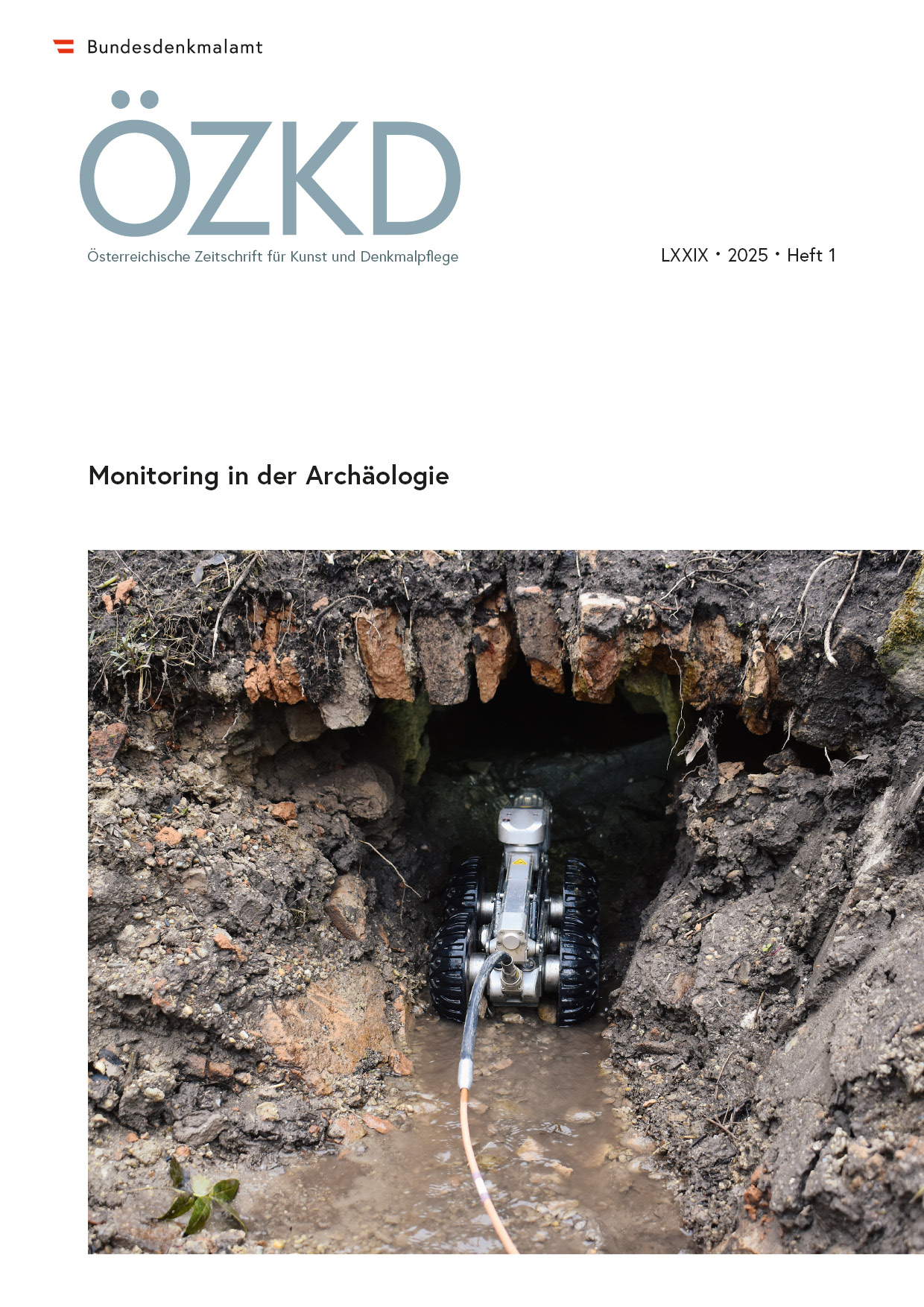
ÖZKD LXXVIII 2025 Heft 1, pp. 61-64, 2025/05/08
Monitoring in der Archäologie

Styria’s archeological monument landscape is strongly characterized by distinctive burial mounds stemming from various historical periods. The Hallstatt Period burial sites of the Burgstall Necropole, for example, have long been known as typical ground monuments, and their density and shape make them nationally unique. But there are also a number of burial mounds from the time of the Roman Empire whose shapes range from smaller groups of two to three burial mounds up to burial sites that are more spread out, which can contain hundreds of individual objects. The data provided by the Styrian government really helps the monuments office support this significant monument category. Comparing the aerial images of different flight periods can reveal changes in the cultivation of the affected areas of land whose effect on the monuments can be examined using laser scanner data. This procedure is demonstrated by using a few case examples.